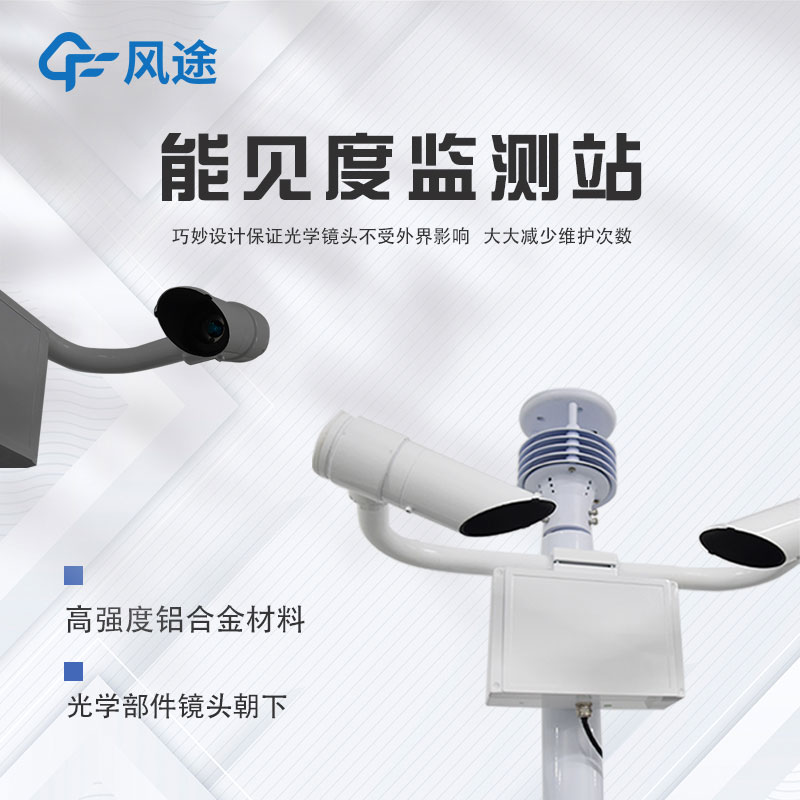Shandong Fengtu IOT Technology Co., Ltd
Sales Manager:Ms. Emily Wang
Cel,Whatsapp,Wechat:+86 15898932201
Email:info@fengtutec.com
Add:No. 155 Optoelectronic Industry Accelerator, Gaoxin District, Weifang, Shandong, China

Sales Manager:Ms. Emily Wang
Cel,Whatsapp,Wechat:+86 15898932201
Email:info@fengtutec.com
Add:No. 155 Optoelectronic Industry Accelerator, Gaoxin District, Weifang, Shandong, China
time:2023-07-03 17:09:00 source:Weather Station viewed:689 time
Mobile visibility monitoring stations are used to monitor the visibility values in the air and their change process automatically by various meteorological detection equipment in urban areas, providing a scientific basis for meteorological departments to make decisions on defence against weather disasters and to implement artificially influenced weather operations. Mobile visibility monitoring data is a real-time and effective early warning service system that provides a visual indication of the visibility conditions seen at different locations or times of day. With this data, the public can keep abreast of weather conditions and avoid suffering unnecessary damage.
Its fields of application -
1. Safety: Atmospheric visibility is crucial for traffic safety. In the transport sector, such as roads, railways and aviation, good visibility conditions reduce accidents and provide safety for drivers, pedestrians and passengers.
2. Flight safety: In aviation, pilots need accurate visibility information for take-off, landing and navigation. When visibility is poor, pilots can face difficult and potentially dangerous flight conditions, so accurate measurement of atmospheric visibility is essential for flight safety.
3. Weather forecasting: Atmospheric visibility is one of the most important parameters in meteorological observations and is of great importance for weather forecasting and meteorological research. It can be used to analyse and predict atmospheric phenomena such as fog, haze and dust storms, helping people to better understand weather conditions and make appropriate responses and decisions.
4. Environmental quality assessment: Atmospheric visibility is also one of the important indicators for assessing environmental quality. Areas with poor visibility are usually associated with environmental problems such as air pollution and high concentrations of particulate matter. By measuring visibility, the concentration of particulate matter in the atmosphere and the level of pollution can be monitored and assessed, providing a basis for environmental protection.
In summary, measuring atmospheric visibility is important for traffic safety, aviation safety, weather forecasting and environmental quality assessment. It helps to provide accurate information and data to help us better understand and respond to different atmospheric conditions, ensuring the safety of people and the health of the environment.

temperature and humidity monitoring Monitor the relative humidity and temperature of indoor or outdoor air to provide accurate data for various applications....
Small weather station configuration listWindway Technology is the source manufacturer of small weather stations, whose configuration list is shown below.Miniature weather sensorSolar panelIP66 protective box (with LCD screen inside)2m vertical poleGround cageCloud platformUpper computer, Android APP...
GNSS receiver price varies significantly depending on the model and features. The high-precision choke coil antenna version costs approximately 6900 yuan. The device fully supports the Beidou satellite navigation system, integrates differential RTK technology, boasts millimeter-level positioning accuracy, and an IP68 protection rating, making it suitable for surveying, disaster prevention, and transportation applications....
Grid-based air quality monitoring is an air quality monitoring method based on grid-based spatial distribution. The monitoring area is divided into grid cells, and air quality monitoring data from air quality monitoring stations and meteorological data are used to predict and assess the air quality...